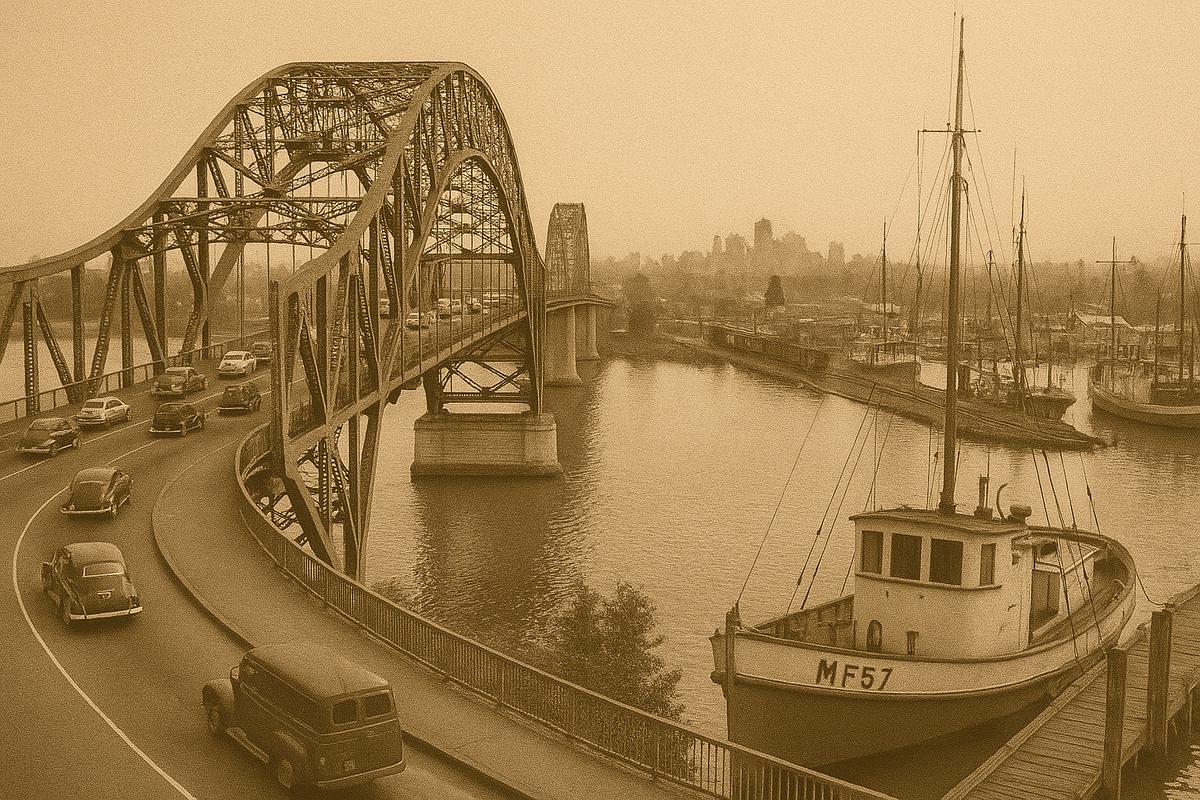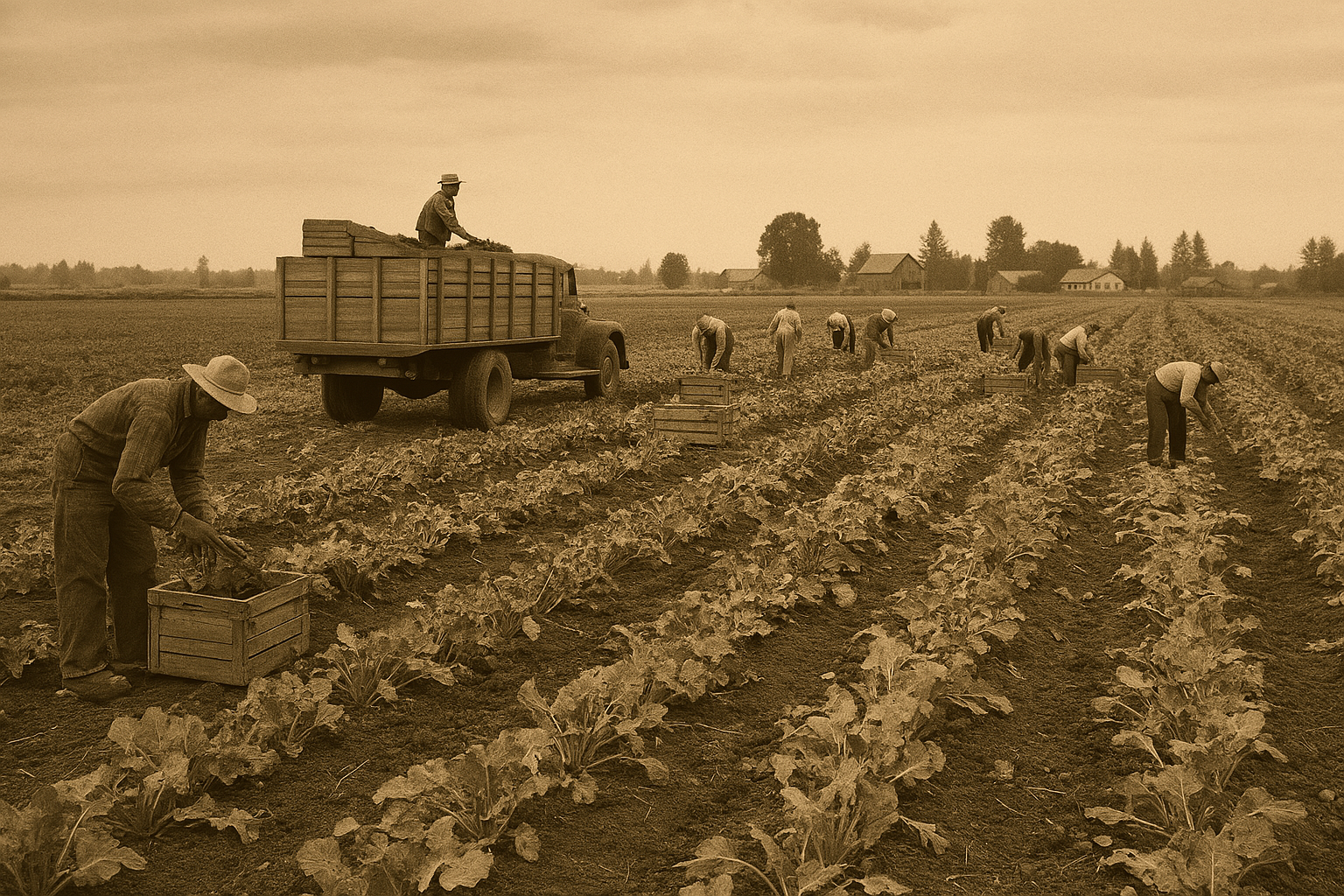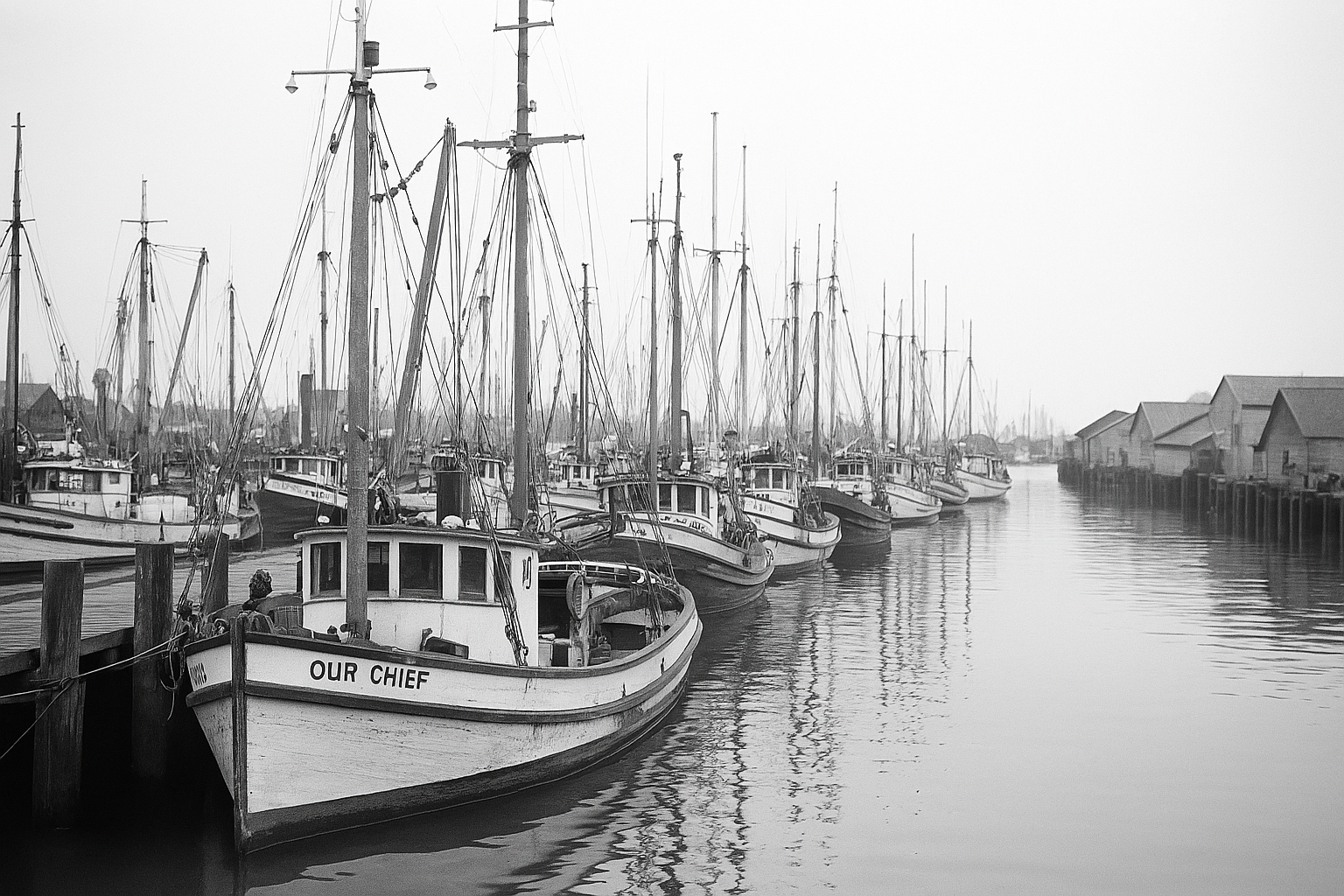
Richmond Business History Series – 1950s
By Robert Skinner | WBN News | May 10, 2025
Subscribe To WBN News: https://wbn.digital?fpr=robert10
In the years following World War II, Richmond, BC began to redefine its economic identity. Once dominated almost entirely by fertile farmland and family-run agricultural operations, the city witnessed a slow but significant shift toward maritime industry—most notably in fishing and seafood processing.
During the 1950s, Richmond’s flat terrain and nutrient-rich delta soil made it an agricultural powerhouse. Families grew everything from berries and vegetables to potatoes and corn, while raising poultry and dairy cattle. These farms supplied Vancouver and surrounding regions with fresh produce and helped define Richmond’s rural charm.

However, the post-war boom created new demands—and new opportunities. As British Columbia’s population grew and urban centers expanded, the Lower Mainland became more connected through infrastructure such as bridges and railways. Richmond’s proximity to the Fraser River and Steveston Harbour positioned it perfectly to capitalize on the province’s burgeoning fishing industry.
The town of Steveston, once a modest fishing village, became a hub for commercial fishing and seafood processing. By the mid-1950s, the BC Packers plant in Steveston was one of the largest fish processing operations on the West Coast, employing thousands. Salmon and herring were the staples, but technological advances in refrigeration and transport allowed for a growing variety of seafood to be caught, packed, and shipped globally.

This diversification didn’t mean the end of farming in Richmond, but it marked the beginning of a new economic era—one in which agriculture and fishing coexisted, each adapting to shifting market forces and urban development pressures. The fishing sector brought new jobs, economic resilience, and international trade connections, helping to anchor Richmond as a dynamic port-side economy rather than just a quiet rural township.
Today, traces of this post-war transition remain visible. The heritage of farming is celebrated through events like the Richmond Country Farms fall festival, while Steveston still thrives as a commercial and tourist harbour, home to a fishing fleet and seafood restaurants. Richmond’s ability to evolve while honouring its dual economic roots is a testament to the resilience of its community and the foresight of its early entrepreneurs.
Robert Skinner - Publisher
#WBN Richmond #Robert Skinner Publisher #Richmond History #Steveston BC #Richmond Farming #FishingIndustry #BC Packers #Economic Development #Richmond Business Heritage


